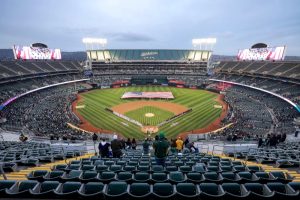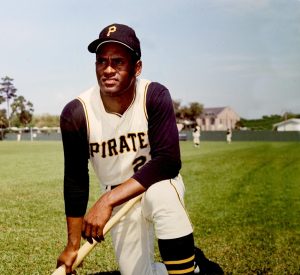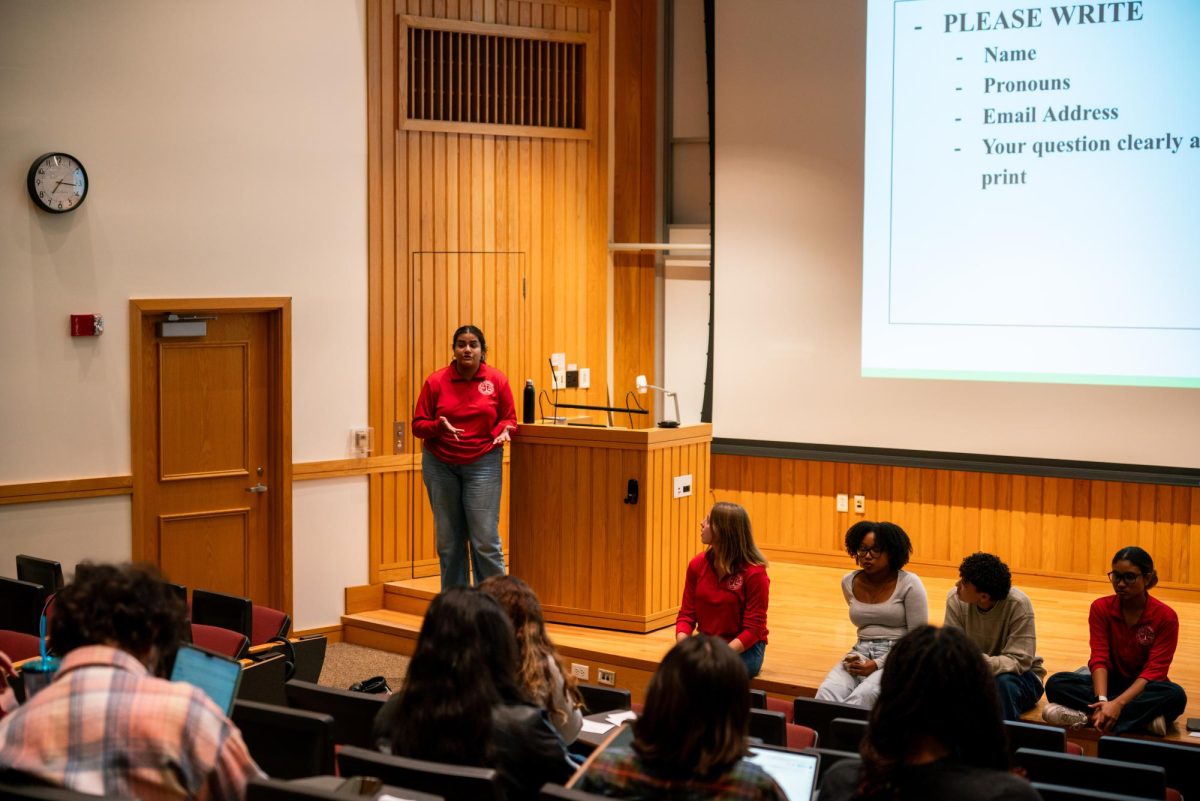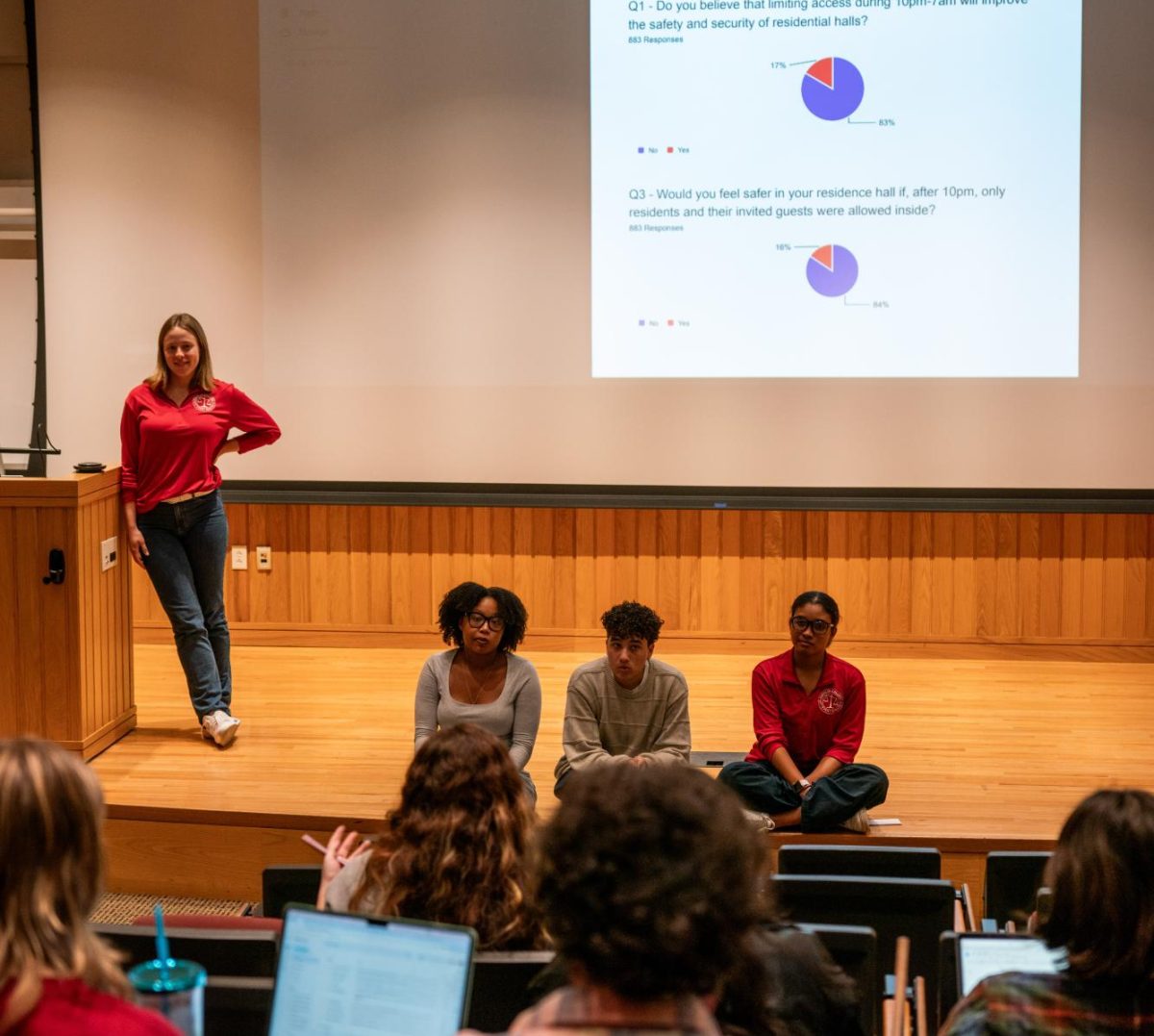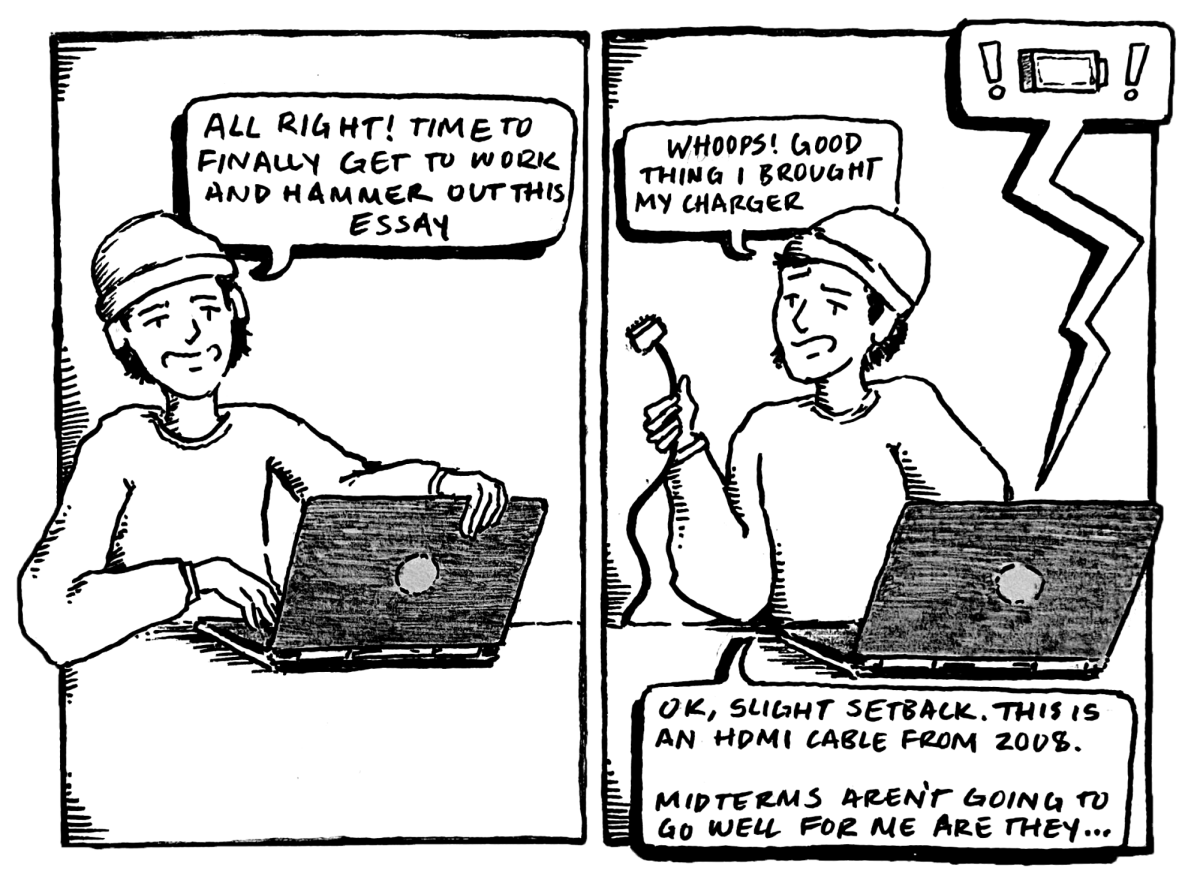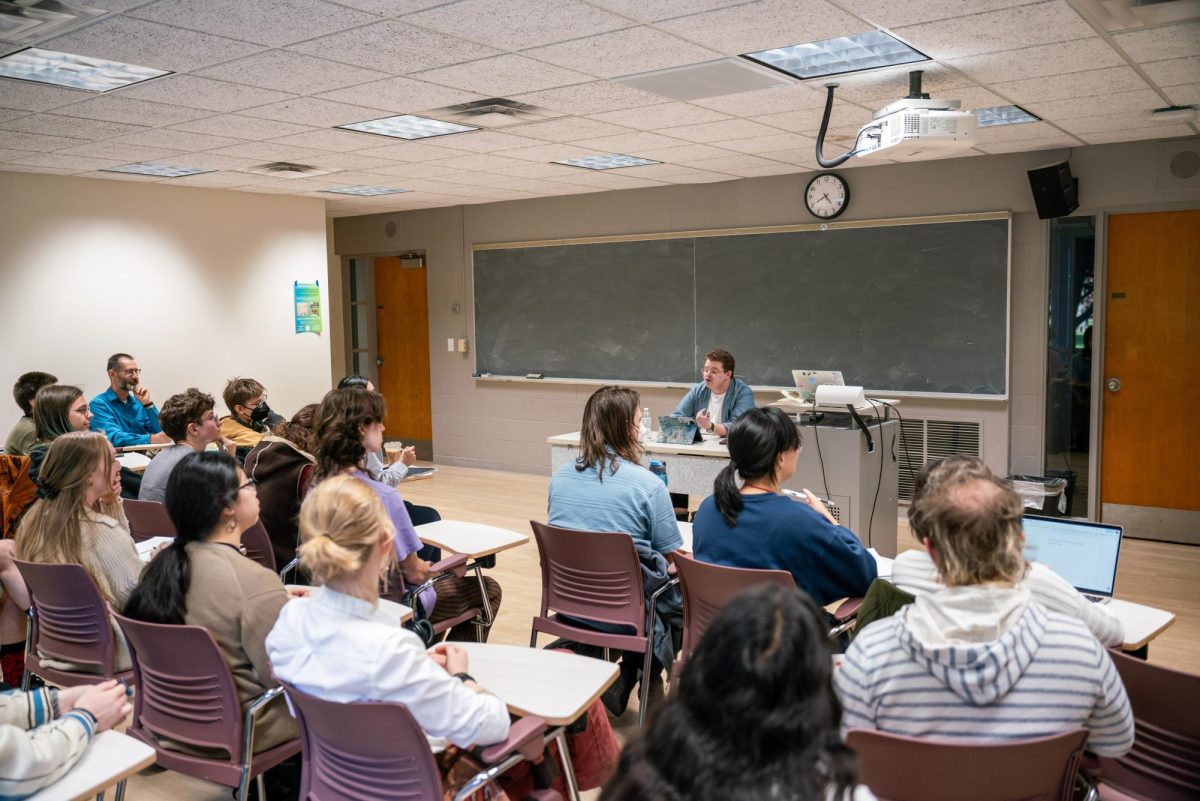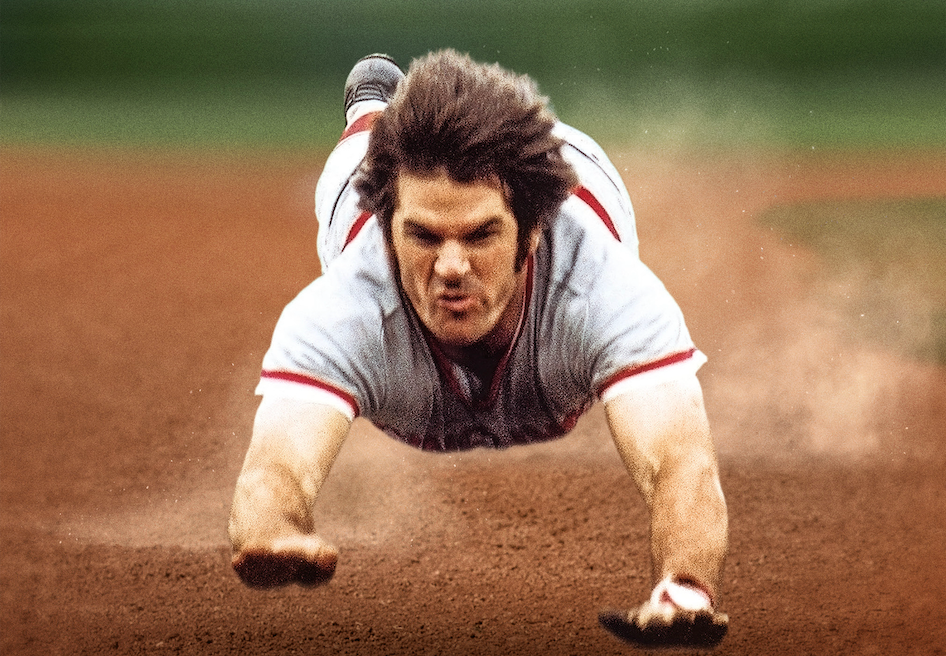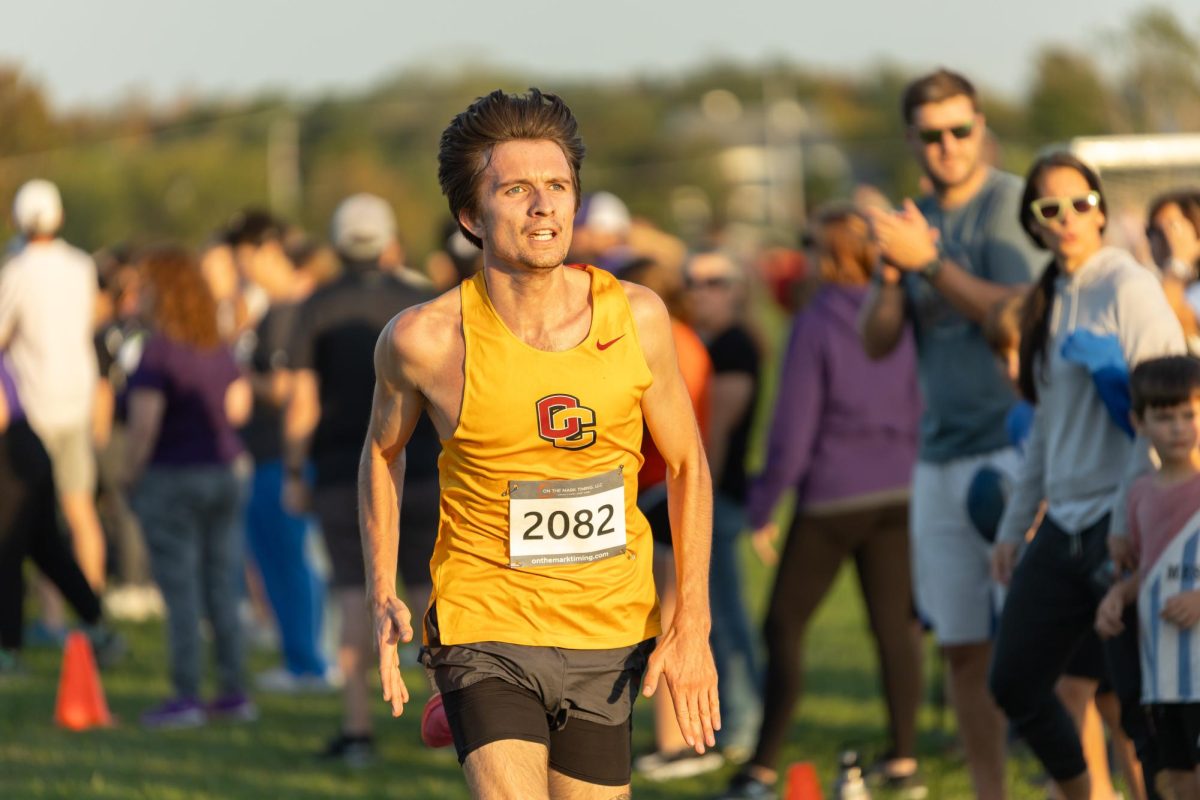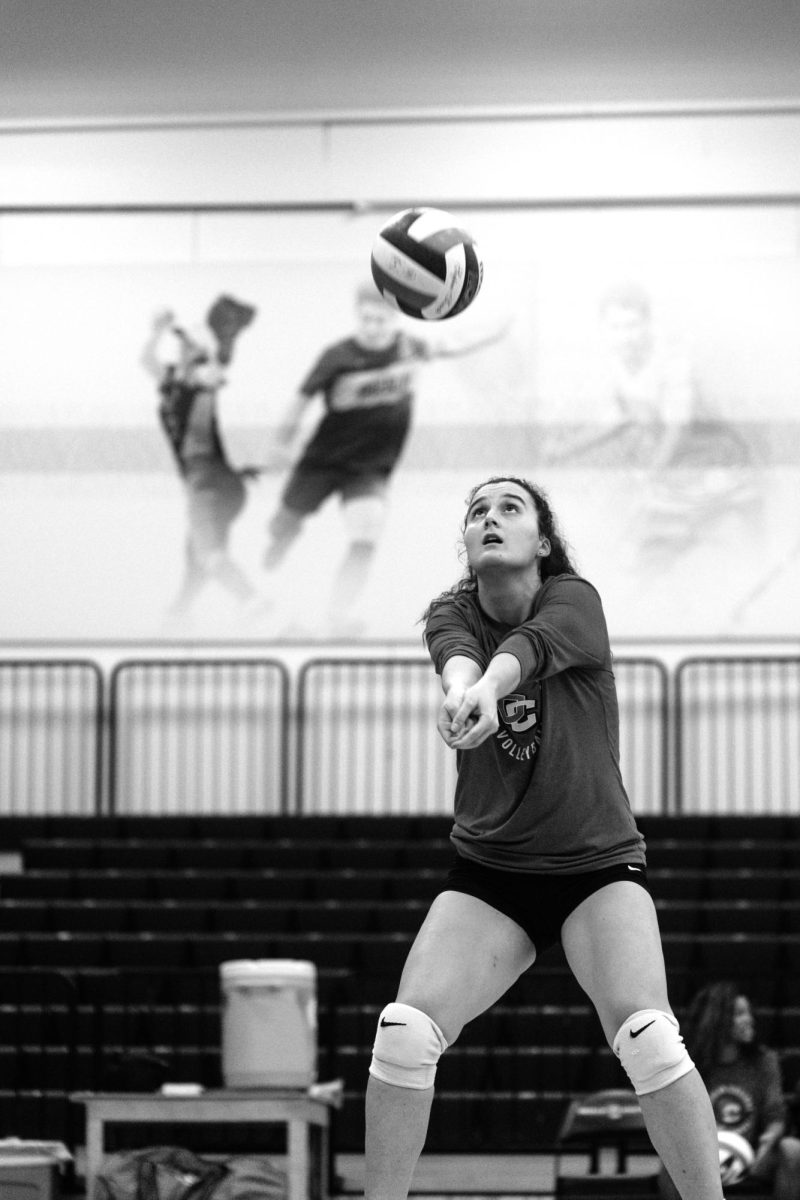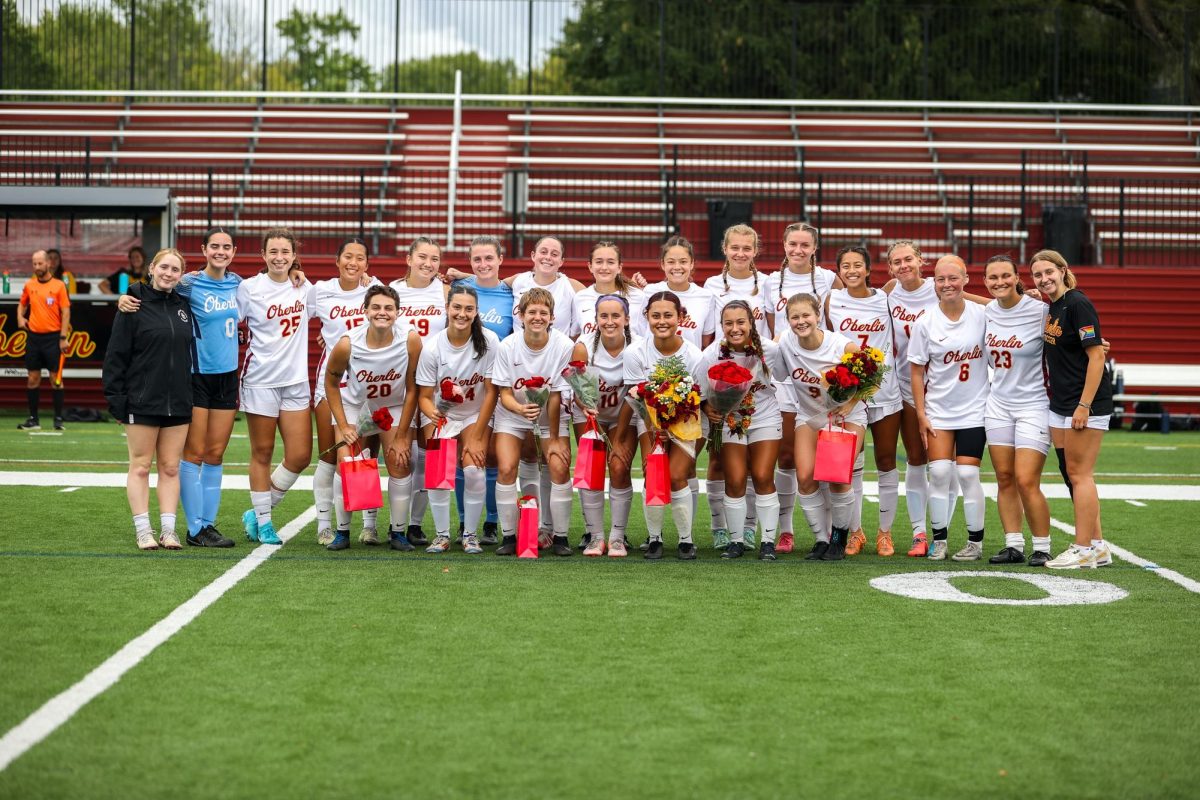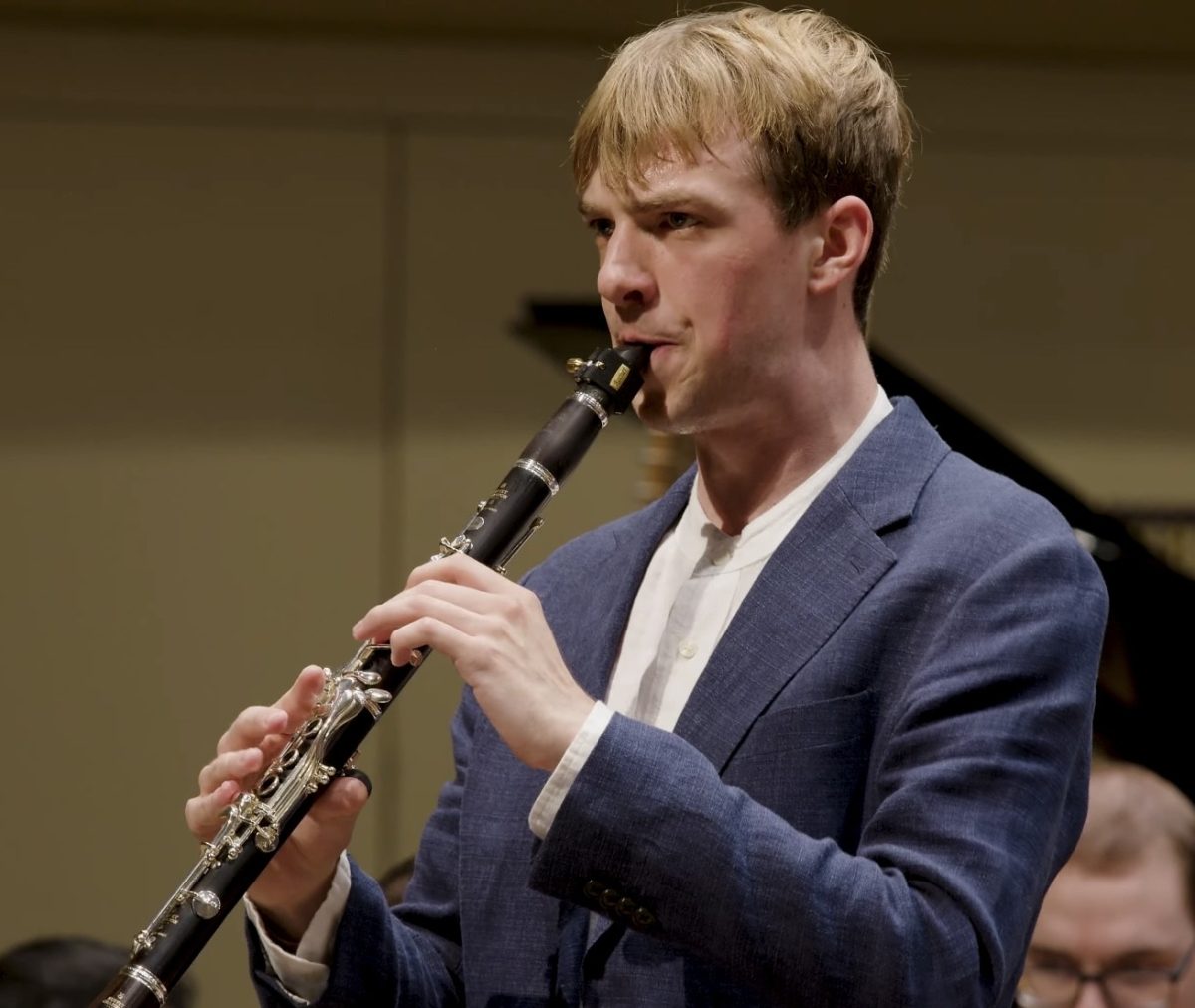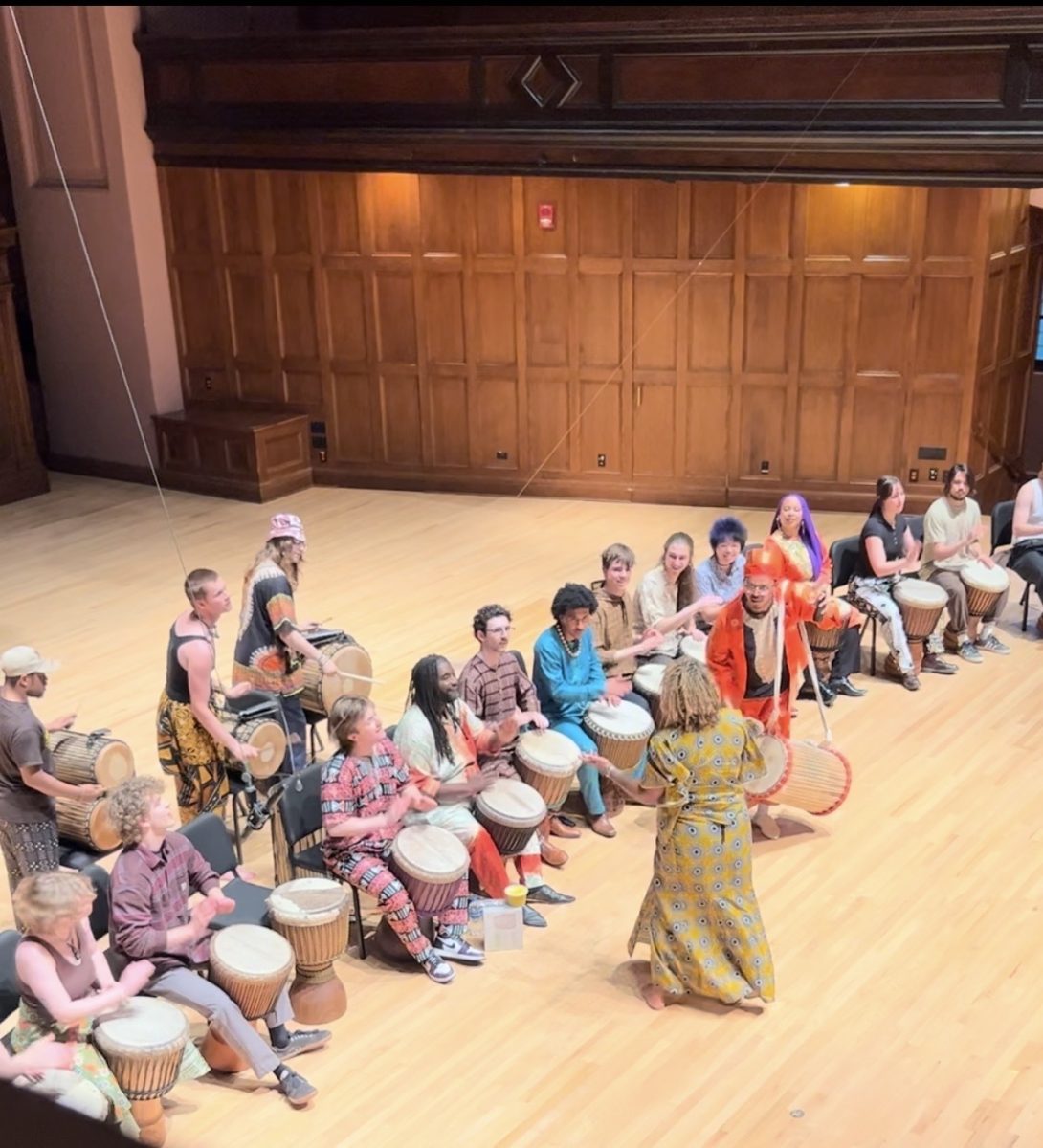Sinfonietta Performs 20th-, 21st-Century Pieces
May 8, 2015
After a year of memorable performances, the Conservatory’s Sinfonietta ensemble concluded with an inspiring and varied program directed by Timothy Weiss this past week.
The concert began with a piece titled “Planos” by the Mexican composer Silvestre Revueltas which was scored for piano, clarinet, bass clarinet, bassoon, trumpet, violin, cello and bass. The piece began with strong chords and an energetic dotted rhythm motif on the piano. The piano’s moving lines contrasted sharply with the placid winds and walking bass line. Much of the piece worked within this contrast of precise rhythmic intensity above slower-moving, spacious soundscapes. As the music developed, different characters became more obvious: The clarinet offered high, sharp exclamations, the trumpet played a more coy and charming role and the strings played almost folk-like melodies. Conservatory sophomore Wyeth Aleksei played soaring trumpet calls with beautiful phrasing, as cellist and Conservatory junior Rachel Mills played a long flowing melody atop delicately balanced winds. The piece continued changing characters and eventually found its way back to a restatement of the original dotted rhythmic theme on the piano, which brought it to a satisfying close.
Next on the program was the great Russian composer Edison Denisov’s “Chamber Symphony No. 1.” The piece was written in 1982 and consists of three movements, each containing its own musical ideas and shapes, but all connected by Denisov’s textural, atmospheric style. The first movement, marked “Tranquillo,” began slowly. Starting with the flute, each instrument gradually layered on, thickening the texture. The movement had an aleatoric feel to it. As the piece went on, the rhythm became more obscured. The parts didn’t so much interact with each other as add to the music’s hazy effect. The piece moved lazily but eventually hasted with descending runs and pizzicatos in the strings and flutter tonguing in the flute. Following a short piano cadenza, the music began anew. This time, however, the music began to layer, starting with the bassoon and other lower voices. The ensemble swelled but died away quickly as the piano descended to its lowest ranges.
The last two movements of the piece, marked “Agitato” and “Lento,” each fulfilled the promise of their titles. The second movement amalgamated chattering strings and winds, passing short melodic motifs back and forth. Each line ascended and descended independently but together formed an excited mist of sound. The final movement moved between sharply contrasting characters. Gentle cello melodies and an ethereal vibraphone responded to a frenzied piano line. As in the first movement, Denisov slowly layered the instruments, each adding to the folds of interlocking ideas. The piece came to a satisfying close as the winds died away with a final descending line.
For the next piece on the program, classical guitarist Dieter Hennings joined Tim Weiss for a performance of Juan Trigos’ “Guitar Concerto No. 1,” Ricercare de Cámara VI. Hennings is known both for his renderings of early music for lute and baroque guitar, and for his performances of new music. He and Weiss worked in flawless synchronization as the solo guitar line wove effortlessly in and out of a varied and complicated texture. The piece began with the percussionists clapping polyrhythms alongside virtuosic drumming passages in the guitar; the music was extremely rhythmic. The ensemble often had to play short interjections and difficult rhythms against a constantly driving guitar line. Trigos’ use of percussion enlivened the music. Hennings navigated syncopated passages easily and played with immense energy.
The final piece on the program, “Rambleodeon,” began slowly with an ascending clarinet, which was quickly joined by barking winds against driving rhythms in the strings. The piece was by Christopher Dietz, who wrote it in 2010 for a mixed ensemble of winds, strings and percussion. The piece maneuvered between distinct characters. The oboe played a seductive melody, the brass played sharp crescendos and the strings played aggressive pizzicatos. The music was driving, with a constant dotted rhythm beneath the texture. The music waxed and waned and eventually came to an intense finish.
Tim Weiss led the ensemble with a high level of precision. He communicated with calculated technique and an utmost sense of musical direction. The performance was excellent from start to finish and left the audience sad to say that this was Sinfonietta’s final concert of the year.


